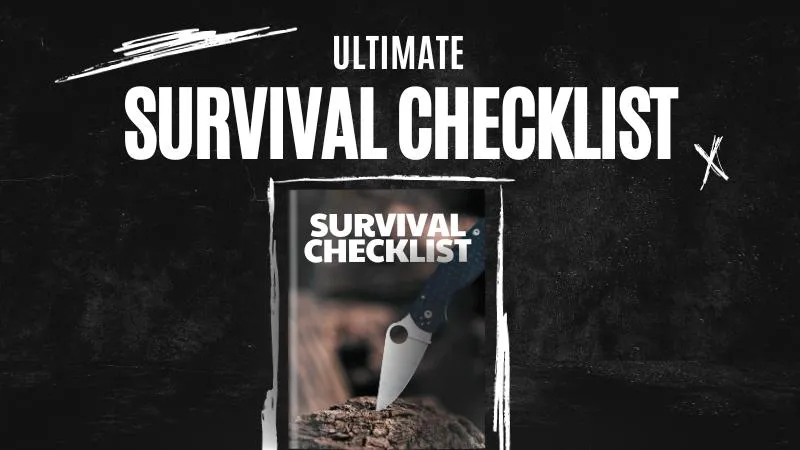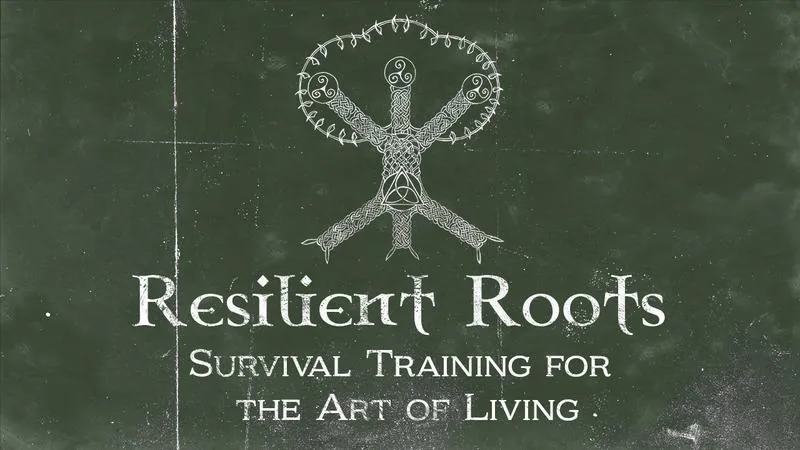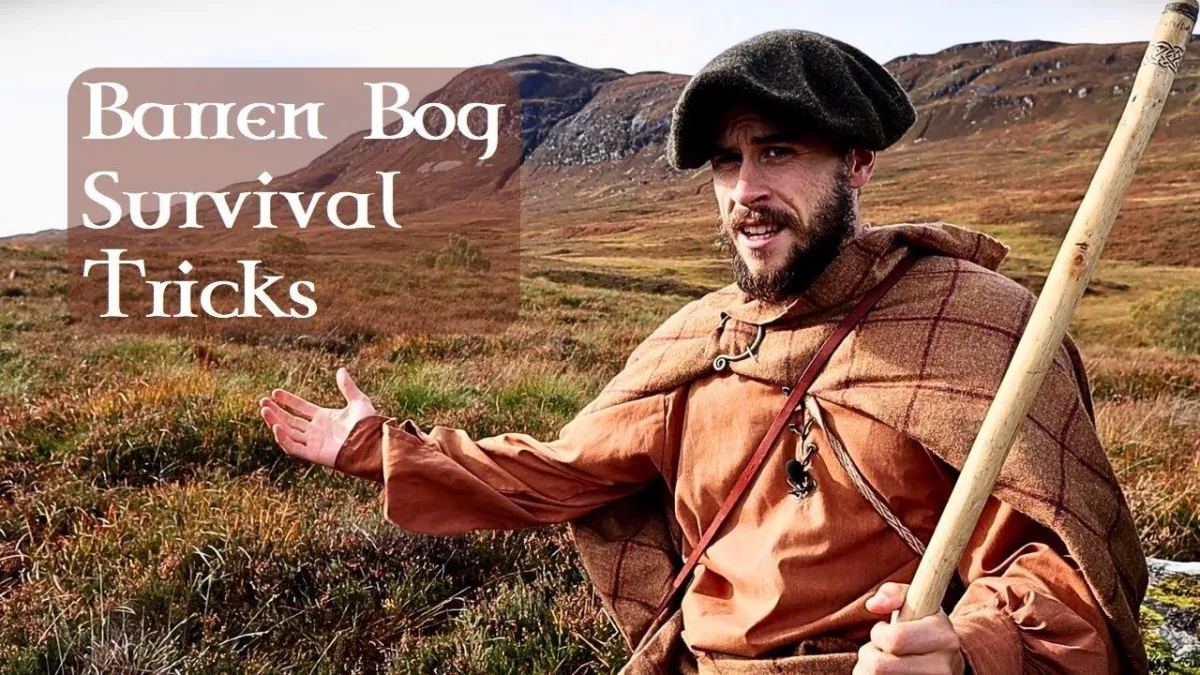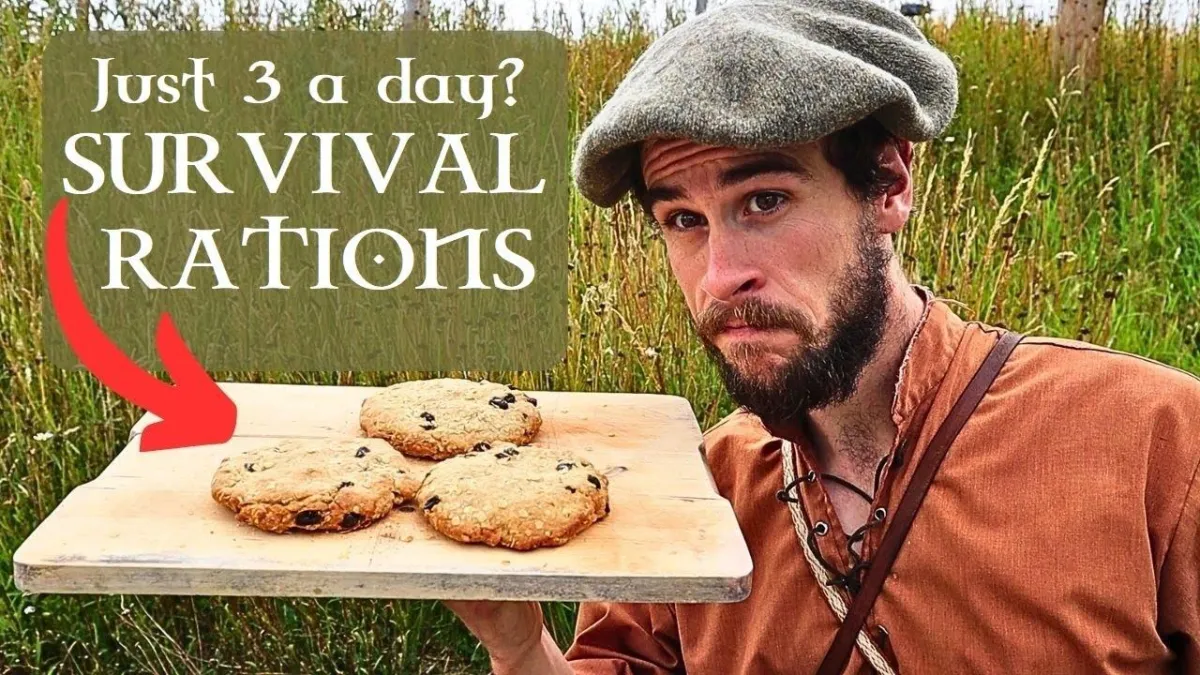
Tom Langhorne
Past to Present Survival Training
for a Grounded Life.
Through my YouTube channels, podcast, & community-led survival school, I teach practical outdoor skills & create spaces where people can learn, reconnect, and grow resilience - in themselves, in their communities, and in the land around them.
Explore the learning →
Resources
Where Do I Start?
Embark on a journey of Survival, Resilience, Focus & Flow.
About Me
Who is Tom Langhorne?
That guy who runs around the Scottish Highlands, wearing a big blanket, swinging a stick about.

Hey, I'm Tom.
I’m a life long wilderness enthusiast on a mission to reconnect people to their natural and cultural heritage through the practice of wilderness living skills. In order to ground ourselves in the foundations of resilience.
Most people know me from my video series on 17th Century Highlander survival. But I’m also here to help you regain your attention from modern distractions, reconnect with your natural roots, gain control of your basic needs, fall in love with your land and nurture a sustainable future for yourself and the planet.
Join me on my Youtube channel, where I share videos on survival, history, martial arts, philosophy, and my outdoor adventures in general. If you want to learn more, you can join our online tribe or come along to one of my in-person events or courses.
Frequently Asked Questions
FAQ
I often get asked about my equipment, channel and approach to the wild. You can find the answers here.
Why the name “Fandabi Dozi” for the Youtube channel?
Short answer is I named the channel “Fandabi Dozi” as a joke when I made my first video back in 2012, before I had any intention of taking Youtube seriously and now the name has stuck. “Fandabi Dozi” is a catch phrase from the 1980’s Scottish TV show “The Crankies”, meaning “Fantastic” or “everything is great”. I filmed my first video in Malaysia when I was out working on a friend’s holiday resort. There we were winding up some tourists telling them that “Fandabi Dozi” was a common Scottish word (which it isn’t). When I got back home to Scotland and had edited the video and needed to make a Youtube channel to share it, the first name that came to my mind was therefore “Fandabi Dozi”. When the channel started to grow exponentially after starting the Highlander series, I regretted the name and almost changed it, but after a vote from my subscribers, it has stayed. I have now made peace with the name as it sums up my light-hearted attitude to my videos and is a fun word to say.
Where can I purchase a Great Kilt/ Plaid material?
This is the most common question I get asked and unfortunately, there isn’t an easy answer (yet). All the Plaids I use in my videos I have found through lots of searching and sampling different fabrics from many providers. Therefore, I plan to source and sell suitable Great Kilts/ Plaids in the future. Please sign up to my mailing list if you want to be notified when this has started.
In the meantime, here are some Great Kilt/ Plaid shopping tips:
If you google “great kilt for sale” you mainly get people selling polyester fabric and often stealing images of me from my videos. If you actually want to use your Plaid as a functional outdoor garment, then you don’t want polyester you want 100% wool.
1) Search for “Heavy Pure wool fabric” on Fabric wholesaler's websites (eBay or Etsy is a good place to start)
2) Find densely woven wool fabric, medium to heavy weight, in a pattern you like, best to ask for samples before you invest in a whole plaid.
3) Buy a length of pure wool fabric 1.5m wide by 5m long (most looms are 1.5m wide anyway, but if you are of tall stature, you may need to sew two lengths together to get a greater width).
4) Hem up the shorter ends of the plaid to stop it from fraying.
Where can I get a Highland Bonnet (hat) like yours?
I purchased all my Highland Bonnets from a shop on Etsy, which unfortunately has now stopped trading. The best place to look is to search “Highland Bonnet” or “Tam o Shanter” on Google or Etsy. Make sure it's 100% wool. I prefer a simple circular one that allows you to wear it in different configurations.
Where can I purchase/When will you make your custom knives again (Fandabi Dubh-Survival Sgian Dubh)?
In the winter of 2020 and 2021, during the COVID-19 lockdowns, I designed and made a custom survival knife inspired by historical Scottish knives with my favourite features of “modern” survival knives. I called it the “Fandabi Dubh - Survival Sgian Dubh”. They were incredibly popular, but as I was making them all by hand, I was unable to keep up with the demand. When lockdowns lifted, I preferred to be out in the wild making videos rather than being stuck in a workshop. Therefore, I have since stopped making them. There are still a handful of “Fandabi Dubhs” left, but I will not start selling them again until I can find someone to make them for me.
If you want to be notified when they will be for sale again, you can sign up to my mailing list just below this FAQ.
What size and style of stick/staff do you recommend for training in martial arts and hiking?
What sort of stick you choose is down to personal preference, and its length is proportionate to your body height. Most of my staff are the same thickness all the way along (between 1” and 1.5” in diameter), are equally balanced and are fitted with an “alpine feral” spike at the bottom. For hikes in steep and rough terrain, I prefer a staff that comes up to my chin in height, any longer is too unwieldy for me. I like a staff about sternum height for lowland hikes or if I want to look less obvious than carrying a huge stick about.
I recommend making one from local hardwood for it to really feel special, but for martial arts, you can also purchase “Jo” or “Bo” staffs made of oak from martial arts websites.
For training in staff spins a lighter staff made of “rattan” is good to start with. You can buy these easily online.
How do you deal with Ticks, Midges and other biting insects when you are out in the wild?
Scotland has many biting insects. Ticks are the main ones to be concerned about. They are a blood-sucking insect in the “Arachnid” family and can carry a disease which affects humans called “Lymes disease” which, if left untreated, can cause serious health problems. Ticks are everywhere in the Scottish countryside, and there is really no way of avoiding them, but here are some tips I use to reduce the number of bites and risk of catching Lymes disease:
- Over up and reduce open bare skin by tucking trousers into socks, and shorts into trousers.
- Wear insect repellent (my favourite brand is “Smidge”) and spray your clothing especially the lower trousers.
- Wearing light-coloured clothes will make them easier to see crawling on you. It helps to keep off the ground by using sitting mats, ground sheets or hammocks.
- Check your whole body for ticks at least once every 24 hours and remove them with tick hooks or tick tweezers. Studies have shown that removing them within the first 24 hours significantly reduces the chances of catching Lyme disease. I have a mirror on my compass I can use to check my face and hard-to-see areas.
- Keep an eye on the bite and if you see a bull’s-eye rash form around the bite or if you get bad flue-like symptoms with a week of the bite then see a doctor. (It can be handy to make a mark next on your skin with a permanent marker, next to the bite so you remember where it is)
- Keep a strong immune system with healthy nutrition and life style.
Midges are the most notorious. They are very annoying but are harmless. Here are some ways to deal with them as well as other biting flies:
- Wear insect repellent, my favourite brand is “Smidge”
- Wear bright coloured, long sleeve clothing (biting insects are attracted by dark clothing)
- If you can, set up camp somewhere with a slight breeze, they are very small so even a small wind blows them away.
- Wear a midge net over a hat to keep the net off your face.
- Just deal with them. You are a guest in the midge’s home, see it as a toll you must pay to enjoy the wild.

Overcome the chaos of modern life & embrace the wisdom of our ancestors.
The journey to mental and physical well-being begins with a step into the wild. Sign up now to receive actionable tips, inspiring stories, and join a community committed to redefining what it means to be truly alive.
© 2024 Tom Langhorne. All Rights Reserved






